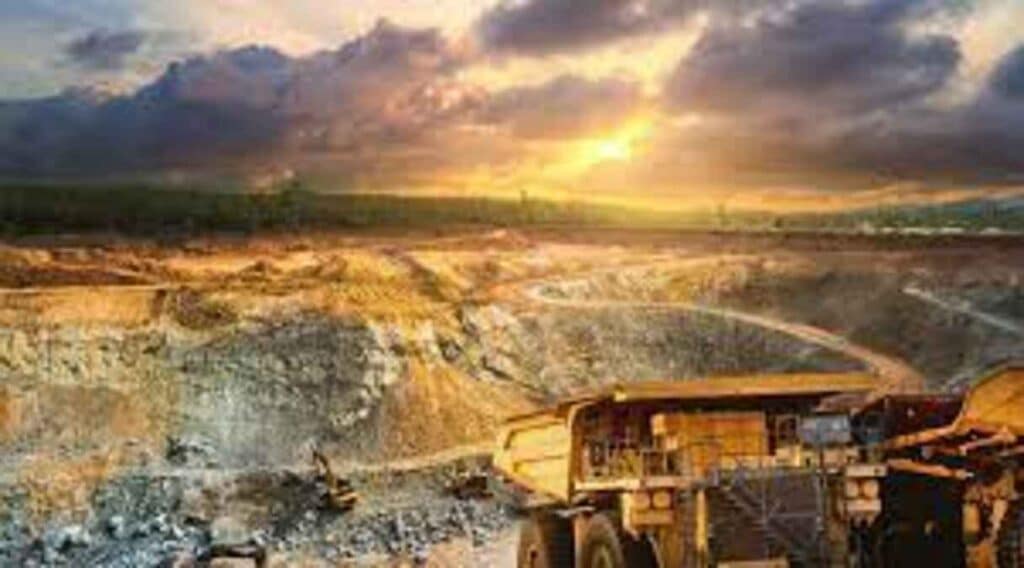Gold Mining: The Best Powerful Process Techniques, and

Gold mining has a storied history that dates back thousands of years. From ancient civilizations to modern-day operations, extracting gold from the earth has been an essential industry worldwide. As a timeless symbol of wealth, gold continues to be a coveted resource. In this comprehensive guide, we’ll take you through the complete process of gold mining, from exploration and extraction to refining and environmental considerations.
Introduction to Gold Mining

Gold mining is the process of extracting gold ore from the earth. Gold can be found in several types of deposits, including placer deposits (found in riverbeds and sedimentary layers) and lode deposits (found in rock formations). The mining process requires sophisticated methods and equipment, making it both a technical and financial challenge for those involved. However, due to the high value of gold, mining operations continue to expand across different regions of the world.
Historical Perspective on Gold Mining
Throughout history, civilizations have sought gold for its beauty and then economic value. From the pharaohs of ancient Egypt, who buried gold artifacts with their dead, to the famous California Gold Rush of the mid-1800s, gold mining has played a key role in shaping global economies and then social structures.
Ancient mining techniques included placer mining, where miners sifted riverbeds for gold nuggets, and hard rock mining, which involved extracting gold from rocks. Today, technological advancements have made the mining process more efficient and then environmentally friendly.
Types of Gold Mining
There are several types of gold mining techniques, each with its specific approach to extracting gold from the earth. The two primary methods are placer mining and then hard rock mining, but other variations exist.
1. Placer Mining
Placer mining focuses on extracting gold from alluvial deposits, which are found in riverbeds, streambeds, and floodplains. These deposits contain gold that has eroded from rock formations and washed downstream over time.
- Panning: The simplest form of placer mining. The heavier gold particles sink to the bottom of the pan that miners use to sort through silt and then water.
- Sluicing: A more advanced technique where water is directed through a sluice box that traps gold particles as they sink to the bottom, while the lighter material is washed away.
- Dredging: A mechanized process in which large suction machines remove sediment from riverbeds, filtering gold from the extracted material.
- Hydraulic Mining: Involves using high-pressure water jets to dislodge gold-bearing sediment, which is then processed to extract the gold.
2. Hard Rock Mining
This method is employed to extract gold from solid rock formations. It is more labor-intensive and then requires more advanced technology compared to placer mining.
- Open-Pit Mining: Large holes are dug into the ground to expose gold-bearing ore. This technique is often used when the gold is found near the surface.
- Underground Mining: Involves tunneling deep beneath the earth to reach gold deposits. The ore is then brought to the surface, where it is crushed and then processed to extract gold.
- Heap Leaching: Involves stacking gold-bearing ore into heaps and then applying chemicals such as cyanide to leach out the gold. The gold is then collected and refined from the chemical solution.
Gold Mining Equipment and Technology
Modern gold mining involves a variety of equipment and then technological innovations that make the process more efficient and then environmentally friendly. Here are the key types of equipment used in gold mining:
1. Exploration Equipment
Before mining operations can begin, geologists and then engineers must survey potential mining sites to determine the concentration of gold. Technologies such as geophysical surveys and then geochemical analysis are used to locate gold deposits deep beneath the surface. Drill rigs are then used to extract samples of ore for testing.
2. Extraction Equipment
Once the mining site is identified, the following equipment is used to extract gold:
- Excavators and Bulldozers: Used to remove large amounts of soil and then rock in both placer and then hard rock mining.
- Drill Rigs: Essential for hard rock mining, drilling deep holes into the earth to access underground ore.
- Crushers: Used to crush mined ore into smaller, more manageable pieces before processing.
3. Processing Equipment
Once gold ore is extracted, it must be processed to separate gold from other minerals. This is done using various methods:
- Grinding Mills: Ore is crushed into a fine powder to increase the surface area for chemical reactions.
- Centrifuges: Machines that use centrifugal force to separate gold particles from other materials.
- Leaching Tanks: Used for heap leaching or vat leaching, where chemicals such as cyanide or mercury are used to dissolve gold and then separate it from the ore.
- Smelters: Used to heat the gold ore to extreme temperatures, causing the impurities to separate from the gold, which then solidifies into bars.
The Environmental Impact of Gold Mining

Gold mining has significant environmental consequences if not managed responsibly.
1. Deforestation and Habitat Destruction
Mining operations, especially open-pit mining, often require the removal of large amounts of vegetation and soil. This leads to deforestation and the destruction of habitats for wildlife. Proper reclamation plans are essential to restore these ecosystems post-mining.
2. Water Pollution
Mining processes like hydraulic mining and then cyanide leaching can lead to the contamination of nearby water sources with harmful chemicals. Proper waste management and then water treatment solutions are vital for minimizing pollution.
3. Carbon Emissions
Mining operations typically rely on heavy machinery and then equipment that use fossil fuels, contributing to carbon emissions. Electric-powered machinery and then renewable energy sources can help reduce the environmental footprint of gold mining operations.
4. Tailings and Waste Management
The waste materials (tailings) generated from gold mining contain potentially toxic substances such as arsenic, mercury, and then cyanide. Proper tailings storage and then treatment are crucial to prevent environmental contamination.
Sustainable Gold Mining Practices
With growing awareness of the environmental impacts of gold mining, the industry is shifting towards more sustainable practices. Several key approaches are being implemented to minimize the environmental footprint of gold mining.
1. Eco-Friendly Technologies
Innovations such as green chemistry for gold extraction reduce the need for toxic chemicals like mercury and then cyanide. Alternative methods like gravity separation are becoming more popular in modern mining operations.
2. Recycling Gold
Another way to reduce the environmental impact of gold mining is by recycling gold from old jewelry, electronics, and then other products. Recycled gold requires far less energy and then resources to process compared to newly mined gold.
3. Responsible Mining Initiatives
Several organizations promote responsible gold mining, encouraging companies to minimize their environmental and then social impact. The Responsible Gold Mining Principles (RGMP), for instance, provide a framework for ethical gold production, focusing on environmental stewardship, worker safety, and then community engagement.
Economic Importance of Gold Mining
Gold mining contributes significantly to the global economy, especially in developing nations. Countries like South Africa, Australia, China, and then Russia are among the world’s top producers of gold. The revenue generated by gold mining supports infrastructure development, job creation, and then national exports.
In countries with limited economic opportunities, mining provides a critical source of income and then investment. Many small-scale, artisanal miners depend on gold mining for their livelihood, though they often lack access to modern equipment and then safety measures, making their work more dangerous.
Employment and Job Creation
The gold mining industry employs thousands of workers, from geologists and then engineers to machine operators and then laborers. These jobs are often located in remote areas, providing much-needed employment in regions with limited economic activities.
Economic Growth
Governments in gold-producing nations benefit from tax revenues and then royalties collected from mining companies. These funds can be reinvested into healthcare, education, and then infrastructure, contributing to long-term national development.
Gold Refining: From Ore to Pure Gold
Once gold ore is mined, it undergoes a refining process to remove impurities and then produce pure gold. There are several methods used in gold refining, including:
1. Smelting
Smelting involves heating gold ore to a high temperature in a furnace. This process causes the impurities to separate from the gold, resulting in a purified product.
2. Electrolysis
In the Wohlwill process, electrolysis is used to refine gold to 99.99% purity. Gold is dissolved into an electrolyte solution, and then an electric current is passed through it to deposit pure gold onto a cathode.
3. Miller Process
The Miller process is a faster, though less pure, method of refining gold. Chlorine gas is passed through molten gold, causing impurities to separate and then float to the surface.
Future of Gold Mining
The future of gold mining lies in sustainable practices, technological innovation, and then exploration of new mining territories. As the demand for gold continues to rise, the industry will need to find ways to meet this demand without compromising environmental and then social integrity.
1. Technological Advancements
Technologies such as autonomous mining equipment, artificial intelligence, and then drone surveillance are revolutionizing gold mining, making it safer, more efficient, and then less harmful to the environment.
2. Deep-Sea Mining
With terrestrial gold reserves becoming harder to access,
Read more: Mining Websites





